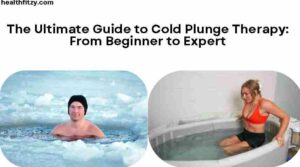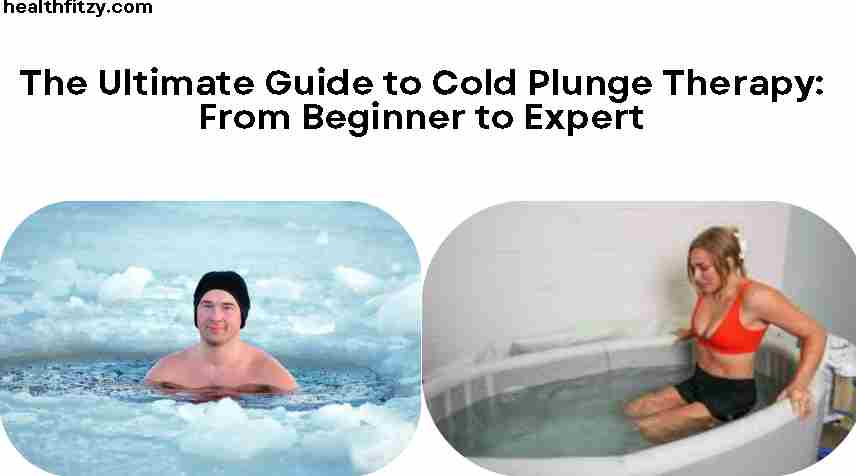How to start cold plunge therapy
The Ultimate Guide to Cold Plunge Therapy: From Beginner to Expert
How to start cold plunge therapy: Dive deep into cold plunge therapy with this comprehensive guide. Learn benefits, step-by-step instructions, safety protocols, advanced techniques, and FAQs to master cold water immersion for physical recovery and mental resilience.
Introduction to Cold Plunge Therapy
Cold plunge therapy, also known as cold water immersion or ice bath therapy, is the practice of submerging your body in cold water (typically 50–59°F or 10–15°C) for short periods. Used by athletes, biohackers, and wellness enthusiasts, this ancient practice has surged in popularity due to its proven benefits for physical recovery, mental resilience, and overall health. Whether you’re a curious beginner or an advanced practitioner, this guide covers everything you need to know to start and master cold plunge therapy safely.

The Science Behind Cold Plunge Therapy
Cold exposure triggers physiological responses that benefit the body and mind:
- Reduced Inflammation: Cold constricts blood vessels (vasoconstriction), reducing swelling and flushing metabolic waste from muscles.
- Enhanced Recovery: A 2020 study in the Journal of Sports Medicine found cold immersion speeds up muscle recovery by lowering tissue temperature and slowing cellular metabolism.
- Mental Toughness: Cold shocks the nervous system, training your brain to handle stress and improving emotional regulation.
- Immune Boost: Regular cold exposure increases white blood cell production, as noted in a European Journal of Applied Physiology study.
Benefits of Cold Plunge Therapy
1. Physical Benefits
- Muscle Recovery: Reduces delayed onset muscle soreness (DOMS) post-workout.
- Joint Pain Relief: Eases arthritis and chronic pain through anti-inflammatory effects.
- Improved Circulation: Alternating cold and warm exposure (contrast therapy) strengthens blood vessels.
- Weight Management: Activates brown fat, which burns calories to generate heat.
2. Mental and Emotional Benefits
- Stress Reduction: Lowers cortisol levels and triggers endorphin release.
- Increased Focus: Sharpens mental clarity by activating the prefrontal cortex.
- Mood Enhancement: Combats anxiety and depression through vagus nerve stimulation.
How to Start Cold Plunge Therapy: A Step-by-Step Roadmap
Step 1: Consult a Healthcare Professional
Cold therapy isn’t for everyone. Avoid it if you have:
- Heart conditions, hypertension, or Raynaud’s disease.
- Open wounds, pregnancy, or respiratory issues.
Step 2: Prepare Mentally and Physically
- Mindset: Embrace discomfort as part of the process. Start with affirmations like, “This is temporary, and I am in control.”
- Pre-Plunge Routine:
- Hydrate with warm water or herbal tea.
- Do light dynamic stretches (arm circles, leg swings) to increase blood flow.

Step 3: Choose Your Setup
Option 1: At-Home Cold Plunge
- Equipment Needed:
- Bathtub, inflatable ice bath, or large container.
- Thermometer to monitor water temperature (aim for 50–59°F).
- Ice (2–4 bags) or a chilling system like Cold Plunge Pro.
- Setup Process:
- Fill the tub with cold water.
- Add ice gradually until the thermometer reads 50–59°F.
- Optional: Add Epsom salts for muscle relaxation.
Option 2: Natural Bodies of Water
- Lakes, rivers, or oceans (ideal for advanced users).
- Check safety conditions (currents, water quality) beforehand.
Option 3: Cryotherapy or Wellness Centers
- Professional-grade cold plunge pools or cryo chambers (-200°F) for targeted exposure.
Step 4: Master the Entry and Breathing
- Breathing Technique: Use the Wim Hof Method:
- Inhale deeply through the nose for 4 seconds.
- Exhale slowly through the mouth for 6–8 seconds.
- Repeat to calm your nervous system.
- Entry Protocol:
- Submerge feet first, then slowly lower your body up to the neck.
- Keep your head above water to avoid dizziness.
- Stay still to minimize heat loss.
Step 5: Time Your Sessions
- Beginners: Start with 1–2 minutes, 2–3 times weekly.
- Intermediate (1–3 months): 3–5 minutes, 3–4 times weekly.
- Advanced (3+ months): 10–15 minutes daily.
Step 6: Post-Plunge Recovery
- Warm Up Gradually:
- Dry off immediately and layer up with warm clothing.
- Sip ginger tea or warm water with lemon.
- Do light exercise (jumping jacks, yoga) to restore circulation.
- Refuel: Eat a protein-rich snack within 30 minutes to aid muscle repair.
Safety Tips and Risk Management
- Avoid Hypothermia:
- Limit sessions to 15 minutes.
- Exit immediately if you experience violent shivering, numbness, or confusion.
- Never Plunge Alone: Have someone nearby, especially in natural water.
- Gradual Progression: Don’t jump into extreme cold (e.g., ice baths below 50°F) without acclimatization.
Advanced Techniques for Experts
- Contrast Therapy
- Alternate between cold plunges (3 minutes) and saunas (10–15 minutes). Repeat 3–4 cycles.
- Benefits: Enhances detoxification, circulation, and recovery.
- Breathwork Integration
- Combine with Tummo breathing or box breathing (4-4-4-4) to deepen focus.
- Cold Exposure Challenges
- Participate in polar plunges, winter swimming, or ice mile competitions.
- Extended Exposure
- Gradually work toward 15–20 minute sessions in colder temperatures (40–50°F).
Common Mistakes to Avoid
- Skipping Warm-Ups: Cold muscles are prone to injury. Always stretch lightly first.
- Overambitious Timing: Pushing too hard too soon leads to burnout or health risks.
- Ignoring Aftercare: Failing to warm up properly can prolong shock to the system.
FAQs: Answering Your Cold Plunge Questions
Q1: Can cold plunge therapy help with weight loss?
A: Indirectly. It activates brown fat, which burns calories, but pair it with diet and exercise for best results.
Q2: How cold should the water be?
A: Beginners: 59°F (15°C). Advanced: 50°F (10°C) or lower.
Q3: Is a cold shower as effective as a plunge?
A: Showers are a good introduction, but full immersion provides deeper muscle recovery.
Q4: What’s the best time of day to cold plunge?
A: Morning for an energy boost, post-workout for recovery, or evening to improve sleep (if done 2–3 hours before bed).
Q5: Can I combine cold plunges with other therapies?
A: Yes! Pair with infrared saunas, red light therapy, or foam rolling for enhanced benefits.
Final Thoughts
Cold plunge therapy is a powerful tool for physical recovery, mental resilience, and holistic wellness. Whether you’re easing into it with 30-second showers or training for a polar swim, consistency and safety are key. Track your progress in a journal, celebrate small wins, and remember: discomfort is where growth happens.



